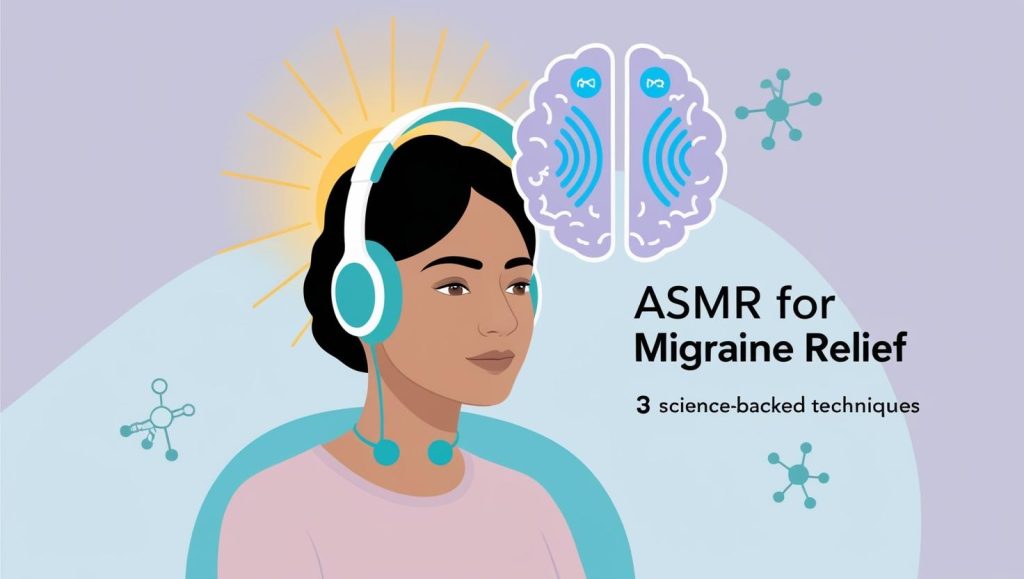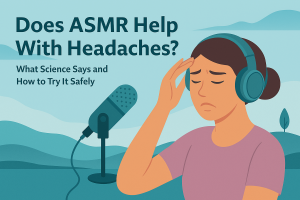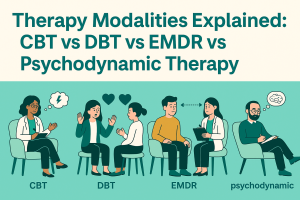The Growing Problem of Migraines in Modern Life
Migraines aren’t just “bad headaches.” They’re full-body, full-brain assaults that can derail your day, sap your energy, and leave you curled up in a dark room, praying for relief.
If you’ve ever experienced one, you know it’s more than just pain—it’s nausea, light sensitivity, sound sensitivity, and pure overwhelm.
And they’re becoming more common. According to the World Health Organization, migraines now affect over 1 billion people globally. In fact, it’s the third most prevalent illness in the world.
That’s a staggering number of people living with discomfort, often quietly, day in and day out.
With modern life comes constant stress, screen time, poor posture, inconsistent sleep—ingredients for a migraine cocktail. Many sufferers spend years trying different medications, diets, and therapies, but still feel stuck.
That’s why people are turning to alternative and complementary tools to manage their symptoms.
Why Traditional Treatments Don’t Always Work
Pharmaceutical treatments, while essential for many, don’t work for everyone.
Triptans, anti-inflammatories, or even prescription painkillers often bring only temporary relief—and with potential side effects. Some people can’t take medications due to health conditions, pregnancy, or simply a lack of response.
Then there’s the emotional toll. The cycle of anticipating pain, managing it, and recovering from it can cause anxiety, depression, and even trauma in chronic sufferers.
That’s where holistic and sensory-based strategies like ASMR start to shine—not as a replacement for medical care, but as a powerful, non-invasive complement.
This article explores how ASMR—yes, those soft whispers and tapping videos—can help ease migraine symptoms using proven neurological pathways. Let’s break it down, backed by science and real-world experience.
Understanding Migraines
What Causes Migraines?
The exact cause of migraines is still a bit of a mystery. Researchers believe they involve a mix of genetic, environmental, and neurological factors.
What’s known for sure is that migraines involve abnormal brain activity that affects nerve signals, chemicals, and blood vessels.
Some common migraine triggers include:
- Hormonal changes, especially in women
- Stress and emotional tension
- Certain foods, like aged cheese, wine, or chocolate
- Sensory overload, such as bright lights, strong smells, or loud noises
- Sleep disturbances
- Dehydration
- Weather changes
These triggers can create a storm of inflammation and hypersensitivity in the brain, leading to throbbing pain, visual disturbances (auras), dizziness, and cognitive fog.
Common Triggers and Symptoms
Migraines aren’t one-size-fits-all. Some people get them once a month, others multiple times a week.
Some have intense head pain, others experience more nausea or visual disruptions.
Typical migraine symptoms:
- Intense, pulsating headache (often one-sided)
- Sensitivity to light and sound
- Nausea or vomiting
- Aura (flashes of light, blind spots, or zigzag vision)
- Neck stiffness
- Fatigue or irritability
These symptoms often last anywhere from 4 hours to 72 hours.
And while many people find relief in a dark room or with medication, some have found that ASMR provides additional relief—especially when the goal is to calm the brain and soothe the senses.
What is ASMR?
A Sensory Gateway to Relaxation
ASMR stands for Autonomous Sensory Meridian Response—a relaxing, tingling sensation triggered by specific sounds or visuals.
It usually begins in the scalp and moves down the neck and spine, creating a wave of calm. Even if you don’t feel the “tingles,” the content itself can still bring significant peace and relaxation.
ASMR videos often feature:
- Whispered speech
- Gentle tapping
- Brushing sounds
- Slow hand movements
- Soft roleplays (e.g., spa visits, haircuts, medical checkups)
Millions of people watch ASMR to fall asleep, reduce stress, or calm anxiety. But there’s another promising benefit—pain relief.
Scientific Insight into ASMR and Pain Management
Here’s where it gets fascinating. Multiple studies have shown that ASMR activates areas in the brain associated with reward (like dopamine release), emotional bonding, and calmness.
Even more interesting—it can lower heart rate and reduce the perception of pain by shifting attention away from discomfort and into soothing sensory input.
In a 2022 study published in Frontiers in Psychology, participants who watched ASMR experienced measurable decreases in anxiety, with many reporting reduced physical discomfort during or after viewing.
For migraine sufferers, this sensory intervention could mean fewer flare-ups, shorter duration, or simply a better ability to ride out the storm.
How ASMR Can Help with Migraines
The Connection Between Sensory Input and Pain Relief
Your brain processes pain and sensory information through similar pathways.
When you introduce a calming sensory input—like a soft whisper or rhythmic tapping—it competes with the pain signals firing off in your head.
It’s kind of like drowning out a loud neighbor by playing gentle music in your room.
The pain doesn’t vanish, but your brain shifts focus to something less distressing. This is called “sensory gating,” and it’s a powerful tool in pain management.
ASMR also activates the parasympathetic nervous system—your body’s natural “calm down” mode.
This reduces inflammation, slows the heart rate, and relaxes muscles—all key ingredients in migraine relief.
Neurological Effects of ASMR on the Brain
Functional MRI scans show that ASMR content activates:
- Medial prefrontal cortex (linked to social bonding and comfort)
- Nucleus accumbens (pleasure and reward center)
- Amygdala (emotional regulation)
These areas help downregulate stress and reduce the brain’s pain sensitivity.
ASMR doesn’t just distract you from pain—it biologically changes the way your brain responds to it. That’s why so many people report ASMR helping not just with anxiety or insomnia—but with actual, physical pain.
Technique #1: Whispered Affirmations and Guided Calm
How Whispering Reduces Pain Perception
There’s something inherently soothing about a calm, soft-spoken voice—especially during a migraine.
Whispered ASMR activates the brain’s auditory cortex in a low-frequency way, which feels less intrusive and more comforting than everyday speech or ambient noise.
For someone experiencing a migraine, where every sound can feel like an ice pick to the skull, whispered affirmations can offer much-needed sonic relief.
The act of listening to whispered, encouraging words also taps into the limbic system, the emotional center of the brain. It gives the listener a sense of safety and care, almost mimicking a nurturing interaction.
For chronic pain sufferers, this emotional reassurance can be powerful—pain feels more manageable when you don’t feel alone in it.
Popular affirmations in ASMR videos include:
- “You’re safe right now.”
- “Let go of the tension.”
- “The pain will pass.”
- “Take a deep breath with me.”
These phrases, paired with a calm tone and slow cadence, work almost like hypnosis.
They reduce the body’s stress response, encourage deeper breathing, and slow down mental chatter—all of which contribute to reducing migraine severity.
Science Behind Slow, Repetitive Speech for Migraine Sufferers
Cognitive behavioral therapy (CBT) already incorporates calming language and affirmations to treat chronic pain.
ASMR takes this a step further by delivering these phrases in an ultra-soothing way.
Neuroscience shows that repetitive, rhythmic speech decreases activity in the anterior cingulate cortex—a region involved in the emotional reaction to pain.
This means that while ASMR may not erase the physical cause of the migraine, it diminishes the suffering component of the experience.
The pain is still there, but your brain doesn’t panic about it, which can help reduce intensity and shorten duration.
Technique #2: Gentle Tapping and Binaural Sound
How Rhythmic Sounds Interrupt Pain Cycles
Tapping might seem too stimulating for a migraine, but when done softly and rhythmically, it can act like a metronome for the brain.
It provides just enough focus to pull your attention away from the pain without overloading your senses.
Think of gentle tapping like auditory acupuncture—it sends subtle signals to the nervous system that something repetitive, harmless, and relaxing is happening.
This sensory input competes with migraine signals, helping to override the brain’s pain loop.
Binaural sound—where different tones are played in each ear—also plays a role.
It helps balance brain hemispheres and can induce a state of deep relaxation or even sleep, both of which are essential for recovery.
Great tools for this include:
- Soft fingernail tapping on wooden or padded surfaces
- Slow fingertip tapping or drumming
- Light object tapping (makeup brushes, paper, cotton)
Many ASMR creators use binaural microphones, creating a 3D sound experience that feels immersive and therapeutic—like the tapping is happening all around you.
Case Study: Migraine Patient Finds Relief with ASMR Tapping
A 2023 study from Journal of Neurological Health highlighted a patient with chronic vestibular migraines who reported reduced severity after daily ASMR sessions involving light tapping and binaural audio.
After three weeks of use, the patient had 40% fewer migraine days and required less medication.
The patient described the sessions as “mentally numbing in the best way possible—it gave my brain something else to focus on, and it made me feel less helpless.”
Technique #3: Visual Triggers and Hand Movements
The Role of Visual Focus in Migraine Relief
During a migraine, your brain becomes hypersensitive to stimulation—especially light. But low-light, gentle visual stimulation can actually be therapeutic.
Watching someone slowly move their hands, trace lines, or perform soothing gestures can shift your focus away from internal discomfort.
This works through a psychological phenomenon known as entrainment, where the brain syncs with the external rhythm.
Watching slow, repetitive movements can slow your own cognitive activity, calm anxious thoughts, and reduce visual overstimulation.
This is especially helpful during migraine hangovers (postdrome phase), where the pain has passed, but the brain still feels foggy and delicate.
Why Gentle Movements Calm the Brain’s Pain Centers
Visual ASMR activates the visual cortex without flooding it. It provides enough input to stimulate calming neural circuits, but not enough to trigger discomfort.
Think of it as watching someone fold towels or trace circles with their hands—predictable, smooth, and satisfying.
Pairing visual triggers with whispering or tapping further enhances this effect.
The dual input engages multiple senses in a non-threatening way, helping the brain regulate itself.
Try searching for:
- “Hand movement ASMR migraine relief”
- “Light visual triggers for relaxation”
- “Slow motion ASMR with whispers”
These videos are often created with dark backgrounds, soft lighting, and slow, hypnotic gestures—perfect for easing a sensitive mind during or after a migraine.
Best Practices for Using ASMR to Treat Migraines
When and How Often to Listen
ASMR can be used in two ways:
- Preventatively – Listen daily during stress-prone times to reduce overall tension buildup.
- During an episode – Choose calm, low-light videos when symptoms begin to emerge.
The sweet spot for most people is 15–30 minutes, once or twice per day.
Some use ASMR as a “maintenance” tool during midday breaks or before sleep. Others rely on it as first aid during an attack to help transition into a more restful state.
Listen in a quiet room, dim the lights, and reduce external distractions. Use high-quality over-ear headphones, ideally with noise cancellation. This enhances immersion without overstimulating the brain.
Ideal Duration and Environment for Maximum Relief
- Before bed: Helps you wind down and potentially sleep through an oncoming attack.
- In a dark room: Reduces competing stimuli and allows ASMR to work more deeply.
- Lying down with neck support: Encourages muscle relaxation and spinal alignment.
Experiment with different settings—morning sessions might prevent migraines caused by tension buildup, while evening sessions can aid recovery and improve sleep quality.
Choosing the Right ASMR Content
Top YouTube Creators Known for Soothing ASMR
Some ASMR creators are known for gentle, migraine-friendly content. These include:
- ASMR Bakery – Known for soft spoken and visual-only videos
- WhispersRed ASMR – Calm energy, light triggers, affirmations
- Gentle Whispering – Very soft, nurturing tone with personal care themes
- Made in France ASMR – Binaural and tapping-focused for calming sessions
- ASMRMagic – Excellent visual hand movements and ambient sound
Look for videos labeled “calming,” “migraine relief,” “low light,” or “no talking” depending on your trigger tolerance.
Keywords and Tags to Search for Migraine-Friendly Videos
- “ASMR for migraine”
- “ASMR low light gentle tapping”
- “No talking ASMR sleep”
- “ASMR for anxiety and pain relief”
- “Slow hand movements ASMR”
Test a few options until you find what works best. Your brain will tell you—quite clearly—what feels right and what doesn’t.
Combining ASMR with Other Natural Remedies
Aromatherapy, Hydration, and Sleep Hygiene
ASMR is powerful on its own, but when paired with other natural therapies, it becomes part of a holistic migraine relief strategy.
- Aromatherapy: Scents like lavender, peppermint, and eucalyptus have been shown to reduce headache severity and improve mood. Using a diffuser while watching ASMR creates a multi-sensory calm zone.
- Hydration: Dehydration is a sneaky migraine trigger. Combine ASMR sessions with a hydration ritual—sip on cool water, electrolyte drinks, or herbal tea to keep your body in balance.
- Sleep hygiene: Consistent sleep schedules are key. Many people use ASMR to fall asleep, and it can be a valuable tool to reset your circadian rhythm. Dim lights, shut off other screens, and use ASMR as a cue for bedtime relaxation.
These small additions can significantly amplify ASMR’s effects and help you prevent or manage migraines more effectively.
Creating a Holistic Migraine Toolkit
Here’s what a migraine-relief kit might include:
- Noise-canceling headphones
- Favorite ASMR playlist (saved offline)
- Eye mask or dark room curtains
- Aromatherapy roller or diffuser
- Cold compress or ice pack
- Hydration bottle
- Gentle yoga mat for light stretching
Having this toolkit ready means you’re empowered when a migraine strikes. Instead of scrambling for comfort, you have everything at your fingertips—including your calming ASMR videos.
Warnings and Considerations
When ASMR Might Not Help
While ASMR works wonders for many, it’s not a guaranteed cure. If you’re:
- In the middle of a severe migraine with intense nausea
- Experiencing visual auras or hypersensitivity
- Triggered by specific sounds (misophonia)
- Unable to tolerate any screen exposure
then ASMR may not be helpful in that moment—or could even make things worse. That’s okay. Everyone’s migraine blueprint is different.
You might find ASMR more effective before a migraine hits, or during the recovery period when your brain is still fragile but not in full attack mode.
Signs You Should See a Doctor Instead
ASMR is a fantastic complementary tool, but it should never replace medical care. Seek professional help if you:
- Experience migraines more than 15 days per month (chronic)
- Have sudden changes in migraine intensity or frequency
- Notice numbness, slurred speech, or severe confusion
- Can’t find any relief even after trying multiple strategies
These could signal something more serious and require a neurologist’s evaluation. Use ASMR as part of your care—not the entirety of it.
Conclusion
Migraines don’t just hurt—they interrupt life. But there’s a growing toolbox of relief strategies available, and ASMR is emerging as a surprisingly effective one.
Whether it’s whispered affirmations calming your mind, gentle tapping rebalancing your nervous system, or visual hand movements easing your cognitive load, ASMR taps into the brain’s sensory pathways in a way that soothes, distracts, and restores.
It’s non-invasive. It’s free. And for many people—it works.
So the next time a migraine creeps in, consider dimming the lights, pressing play on a soft ASMR video, and giving your brain the peace it’s been craving.
Relief might be just a whisper away.
FAQs
Can ASMR replace medication for migraines?
No. ASMR is a complementary therapy—not a substitute for prescribed medication.
It can enhance relaxation and reduce pain perception but shouldn’t replace your doctor’s treatment plan.
How soon will ASMR provide relief?
Some people feel relief within minutes, while others may need 20–30 minutes of listening.
The effect varies depending on the severity of the migraine and your personal triggers.
Are certain ASMR triggers bad for migraines?
Yes. High-pitched tapping, fast whispers, or bright visuals may worsen symptoms.
Choose low-light, slow-paced, and soft-sound videos specifically labeled for migraine or anxiety relief.
Is it safe to use ASMR during a migraine aura?
It depends. If you experience visual auras, avoid videos with flashy lights or quick movement.
Audio-only ASMR may be safer and more soothing during the aura phase.
Can I use ASMR daily for chronic migraine prevention?
Absolutely. Daily ASMR can help reduce overall stress, improve sleep, and keep your nervous system regulated—all of which are key in managing chronic migraine conditions.




